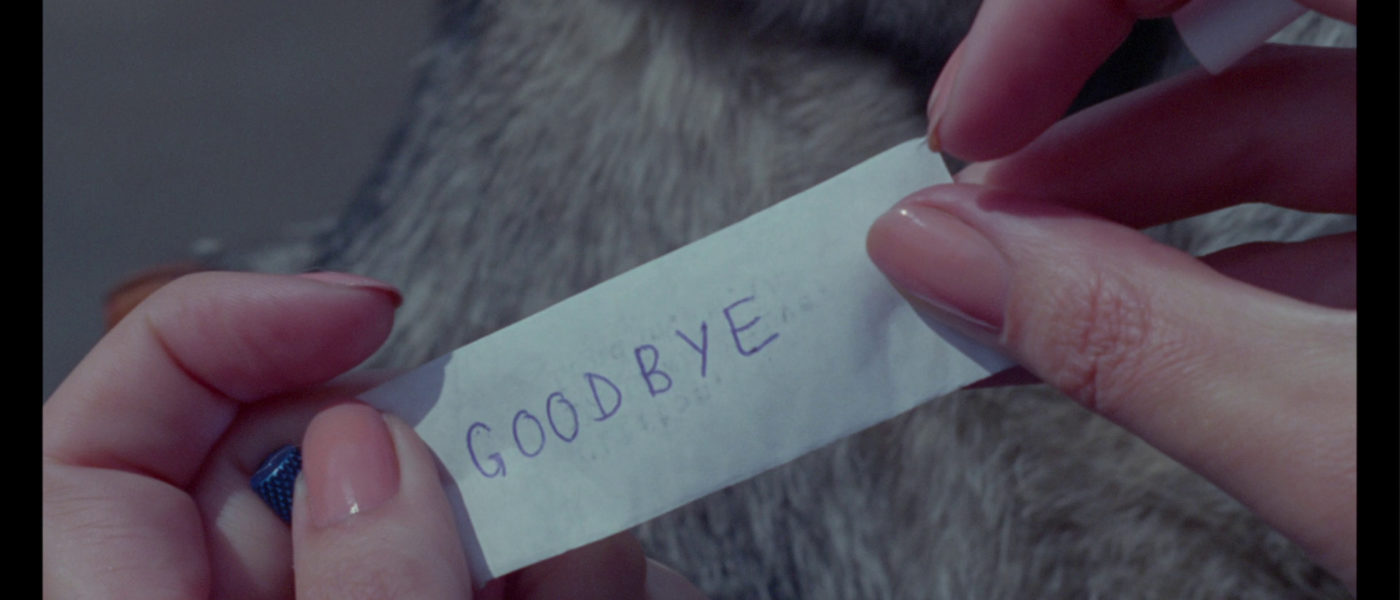Trendsetting British Crime Caper Meticulously Captures Title Subject
1967/BRITISH/DIRECTED BY PETER YATES
STREET DATE: MAY 21ST, 2019/KINO LORBER STUDIO CLASSICS
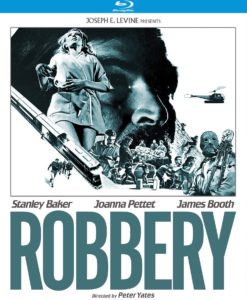
The striking British heist film Robbery, with its 15-minute opening car chase robbery, first caught the attention of American producer Joseph E. Levine, who distributed the movie stateside, and soon after car aficionado Steve McQueen, who tapped its director for the vertiginous San Francisco hills car chase of 1968’s Bullitt. The grim procedural aftermath of the former high-speed London car chase, followed by an equally gripping nighttime mail train hijack, along with the dour personalities pursuing millions of pounds of cash — and those equally dour law-types pursuing those pursuing — individually impacted this lower-budget genre film on subsequent crime thrillers made both in England and abroad. The gear-meshing satisfaction of its filmmaking mirroring the workmanlike professionalism of its lawbreaking, the clockwork precision of subject matter and its filmed execution finds further advantageous expression in the expressionless features of criminals and criminal-chasers. The various cogs in the machinery of both a strongly executed movie and crime appear, in form and expression, tersely true-to-form: street-level, in-the-moment, and without further comment.
But, well, there’s this review. Film lead and co-producer Stanley Baker essentially stepped aside to cast director Peter Yates as the star, scaling back his own performance as just another cog — who happens to be the one in charge — in favor of cameraman Douglas Slocombe’s bold visuals and cutter Reginald Beck’s equally bold visual-tempos. Opening on a daylight security car hijack, the frequent visual reference to driving glove-held, ticking stopwatches propels the first of the title crimes through high-angle to driver seat-level Central London views of hairbreadth corner whip-rounds, culminating in a precision-timed gassing of the target vehicle. The subsequent mid-street crash and strongarm, stocking-masked stickup relieves the gassed vehicle of a fortune in satchel-concealed jewelry; after which collateral damage to a police van at a school intersection, where uniformed primary students and their pretty teacher are placed in crosswalk peril, anticipates collateral threats to the surprisingly durable leather outfits, skin, bones, and internal organs of two nimble, car-leaping robbers.
Most astonishingly, these startling high points to a high-speed pursuit merely sets up the greater robbery to come. Financed through the now attained briefcase of precious stones, mastermind Clifton (Baker) proceeds to organize what may become the greatest crime of the century: a twenty-six-man operation first stopping the Glasgow-to-London sleeper in its 80-miles-per-hour tracks and then seizing and scarpering off with its mailbags-stuffed superfluity — to the tune of several millions — of post-Bank Holiday-transported cash.
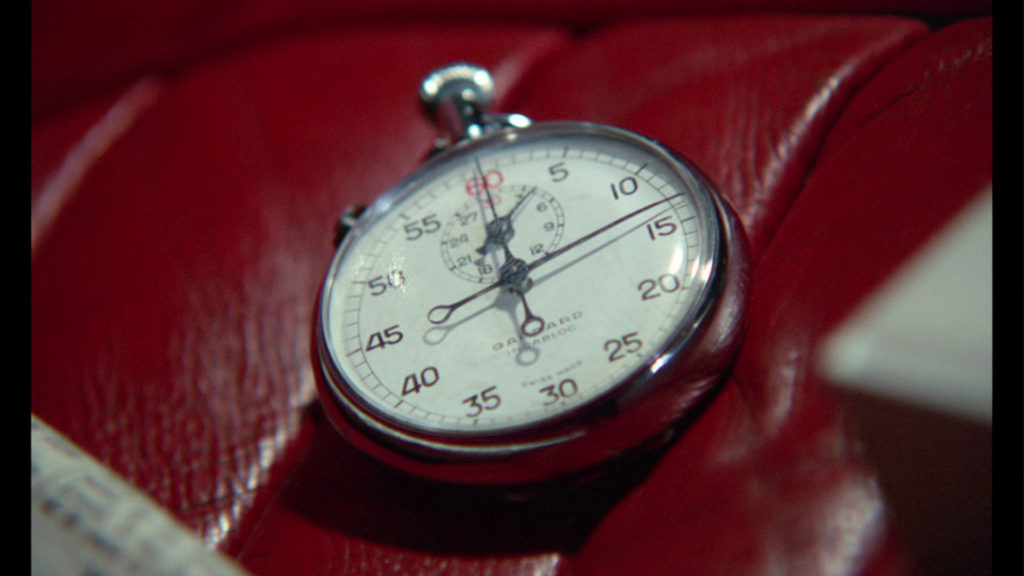
From a lead investigator played by James Booth to the admirably worn, almost interchangeable stoic faces of character actors Barry Foster, William Marlowe, and Clinton Greyn (as the first-pinched, teacher-ID’d/slapped getaway driver), Peter Yates’s straightforward, cut-to-the-bone approach is crime docudrama at its most unsparing. As such, when we do get glimpses into Clifton/Baker’s personal life, his relationship with second-billed Joanna Pettet as wife Kate registers as cold and distant as the tasteful furnishings of their London townhome. Sharing drinks, sex, and little else together, the perfunctory manner of the career criminal’s eventual leave-taking — courtesy of a one-word message concealed in a police-“returned” dog’s collar — nevertheless stands out as the one vaguely emotional moment in a film that has little-to-no place for emotion.
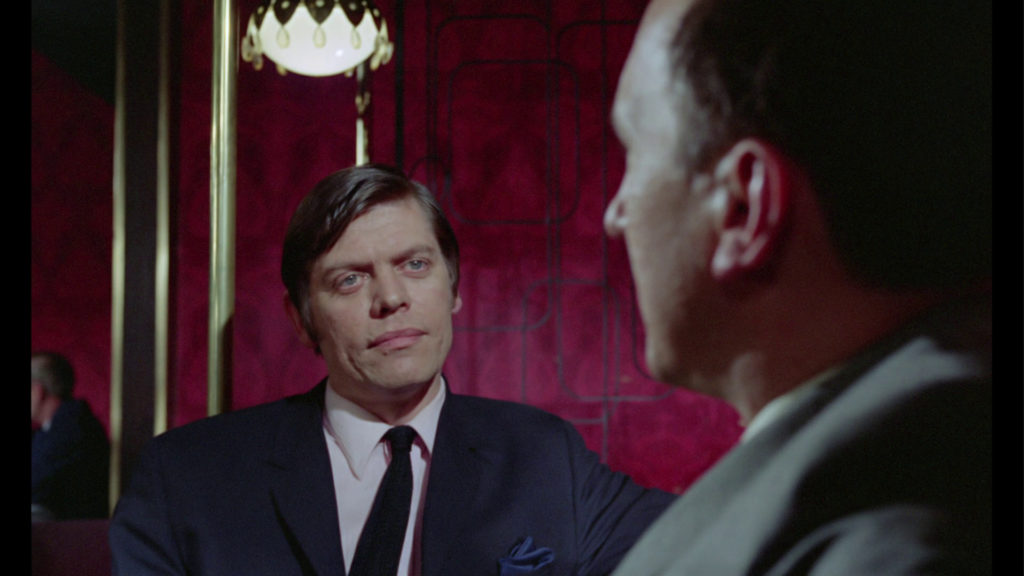
Which isn’t meant as a negative criticism, by the way. Adapted from Peta Fordham’s 1965 true crime-inspired The Robber’s Tale, based on the infamous 1963 Great Train Robbery, where fifteen men hijacked the Royal Mail train and absconded with £2.6 million, director Peter Yates with co-screenwriters Edward Boyd and George Markstein stripped the daring crime and its ruthless prosecution of any conventional screen glamor, instead emphasizing documentary-level realism. The nature of Robbery’s suspense, then, derives little from the individual personalities of its participants but rather from the collective planning and collaborative group efforts of Clifton’s gang, their associates, and, on the other side of the law, the police’s efforts to track and capture them.
When a train engineer threatens to ‘gum up the works’ by committing the cardinal movie sin of being in the wrong locomotive-place at the wrong meticulously scheduled-time, we the audience are in fact relieved when an unseen gangmember quickly knocks the inconvenient innocent out of the way, to probable grave injury if not outright death; similarly, when a roadside call leads the cops to the shack directly over the bunker concealing the crooks and cash, we the audience are surely hoping that the highly intuitive head detective not discover the telltale cracks that will reveal the trapdoor. Although we have little insight into the everyday lives of these at times almost undifferentiated gang of crooks, beyond a fairly perfect scene where the various groups meet with Baker to plan the crime to come in the crowd of a football match, the filmmaking otherwise puts us squarely into ground-level sympathy, to the point of visceral identification, with their moment-by-moment success and failures. For 110 minutes of mercilessly depicted crime, The Empathy Machine that is film momentarily makes robber-voyeurs of us all.
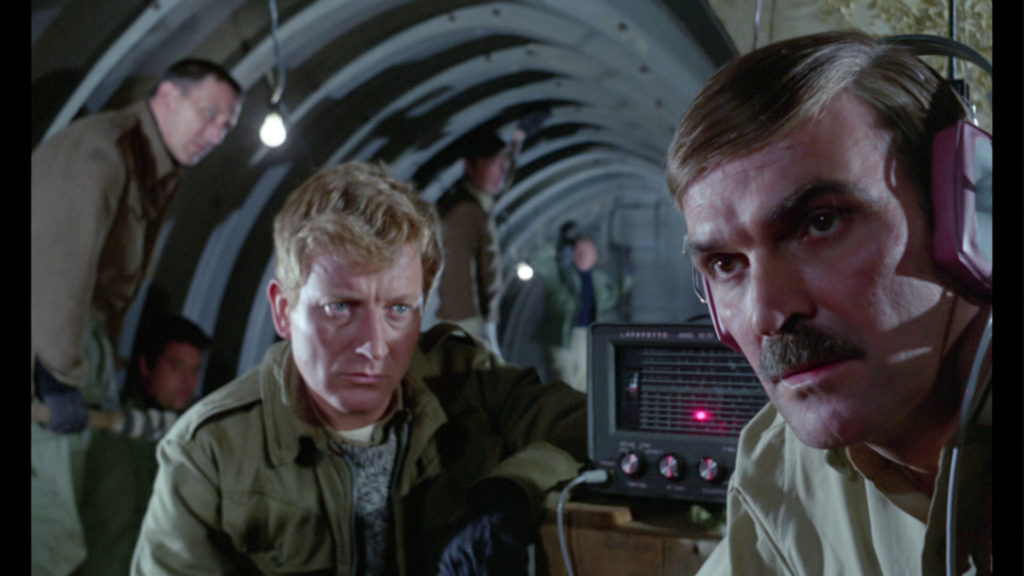
Kino Lorber’s transfer to Blu-ray preserves Robbery’s singularly difficult aspect ratio — variously projected between 1:85:1 and the more demanding 1:66:1 — by lopping off a sliver of visual information at each vertical end. The visually corrected image appears to great advantage on this Blu-ray release, with Peter Yates’s and Douglas Slocombe’s perspective-packed compositions clarified considerably by its proper image format. As backed by Johnny Keating’s jazz-propelling score, it was a privilege for this viewer to appreciate side-sauntering close-ups of character-etched features like Stanley Baker’s or James Booth’s, or a below-the-chin shot of the bespectacled and operational loose screw played by Frank Finlay, framed pensive and grave in off-rectangular view, as originally intended by the filmmakers.
Self-described “peripatetic” film critic Nick Pinkerton offers 110 minutes-worth of well-organized and articulate insights into Robbery’s production, personnel, and plotting; the commentary well worth a listen to more generally for highly-researched thoughts connected to the present review’s multiple mentions (and intellectual robbery of this reviewer’s own) of the audience-involving plot machinery of the heist film genre but even more specifically for the wag behind that research’s resoundingly authentic Stepney-by-Bethnal Green enunciation of several cast members’ curious shared credit convergence on the 1959 Cockney stage revue, Fings Ain’t Wot They Used T’Be. (Vintage car devotees and London street location buffs will find further gratification hearing makes, models, and intersections of the still iconic opening chase sequence identified with a stentorian precision possibly mirroring the meticulous level of filmmaking.)
About as stylistically far as a genre exercise can be taken, Robbery presaged not only the director’s carefully propulsive construction of his more widely seen Bullitt but still later the devastating dramatization of emotionless crooks in his 1973 masterwork The Friends of Eddie Coyle. For these films alone (and this from a viewer who watches the director’s delightful 1979 summer bicycle coming-of-age film Breaking Away at least once a year), Peter Yates deserves belated recognition for his genre-shaping, screen-forming efforts realizing hardened criminals and their equally ambivalent counterparts.
The images used in this review, including the cover image, are credited to DVDBeaver and are taken directly from Kino Lorber’s Blu-ray release. Thanks to Kino Lorber for providing a review copy.


